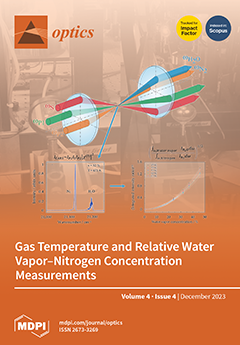Reactive oxygen species (ROS) such as superoxide radicals O
2−, hydroxyl radicals OH−, and hydrogen peroxide H
2O
2 may have detrimental effects on marine organisms, including their integuments and visual appearances. Although some studies have described the impact of ROS
[...] Read more.
Reactive oxygen species (ROS) such as superoxide radicals O
2−, hydroxyl radicals OH−, and hydrogen peroxide H
2O
2 may have detrimental effects on marine organisms, including their integuments and visual appearances. Although some studies have described the impact of ROS on marine ecosystems and species ecology, the influence on the optical response of the integuments of marine species and on their visual appearances remains unknown. In this article, we used histology and optical characterisation to show, for the first time, that skin melanophores (melanin-containing chromophores) of the coral reef fish,
Stegastes apicalis, change their shapes and fluorescent proprieties upon oxidation with H
2O
2 radicals. Our observations also suggest that pheomelanosomes may occur in fish integuments, where, previously, it was thought that fish melanosomes only contain eumelanin. This investigation relied on light and electron microscopy and steady-state fluorimetry, as well as time-resolved streak imaging systems. We suggest that the changes in the morphological and spectral characteristics of melanophores can be used as a marker of physiological stress induced by environmental factors such as ROS. Moreover,
S. apicalis may be used as a potential model for studying the interaction between the surrounding environment and natural organisms in biologically diverse ecosystems, such as the Great Barrier Reef in Australia.
Full article





